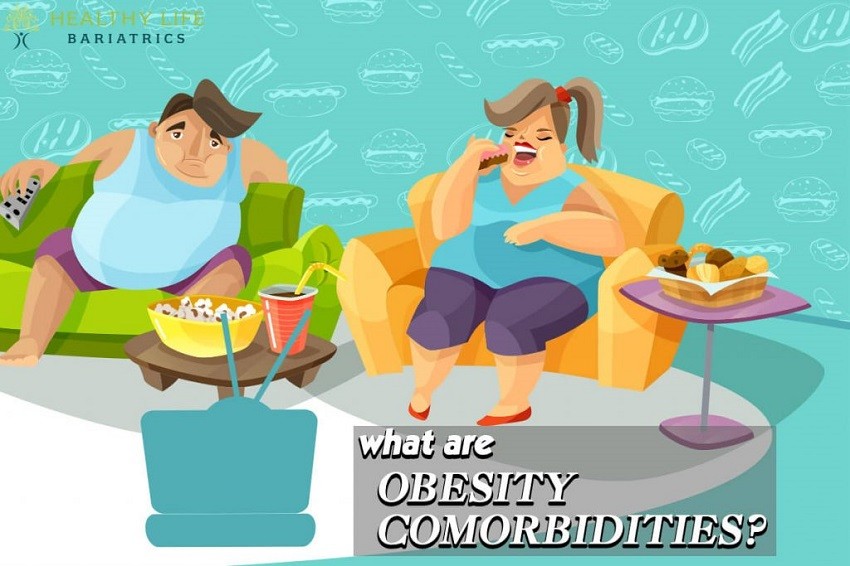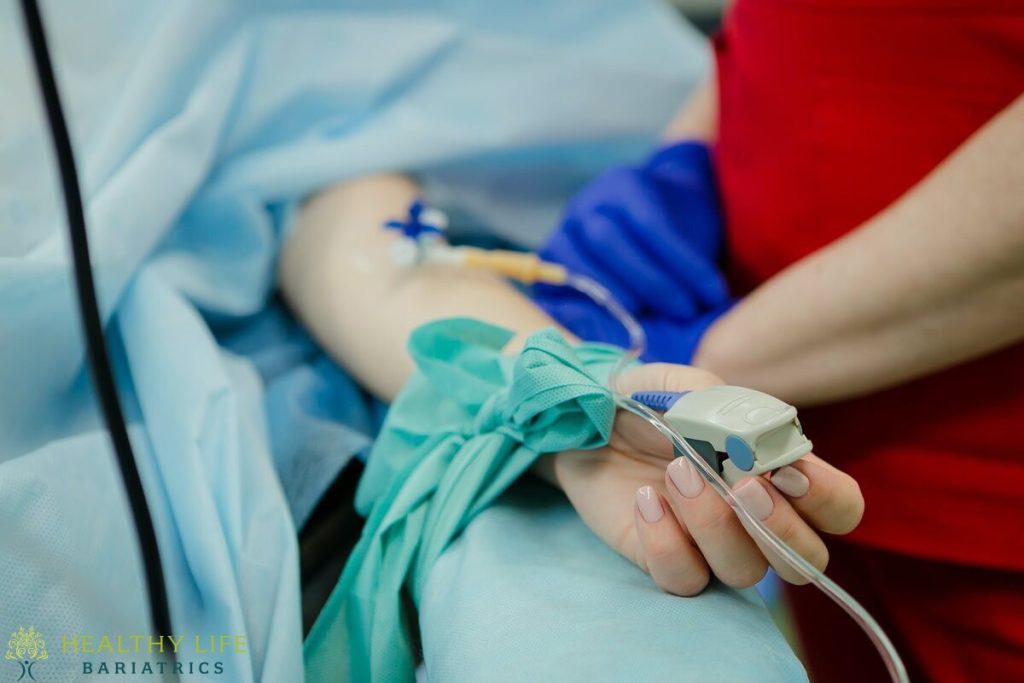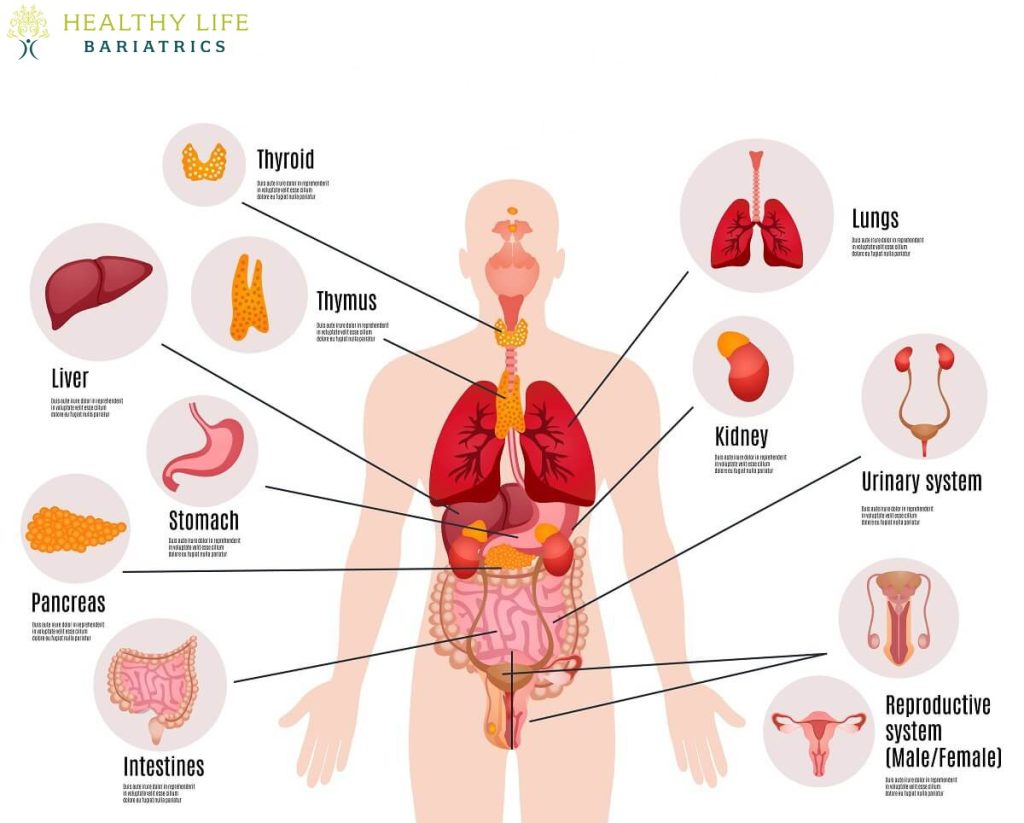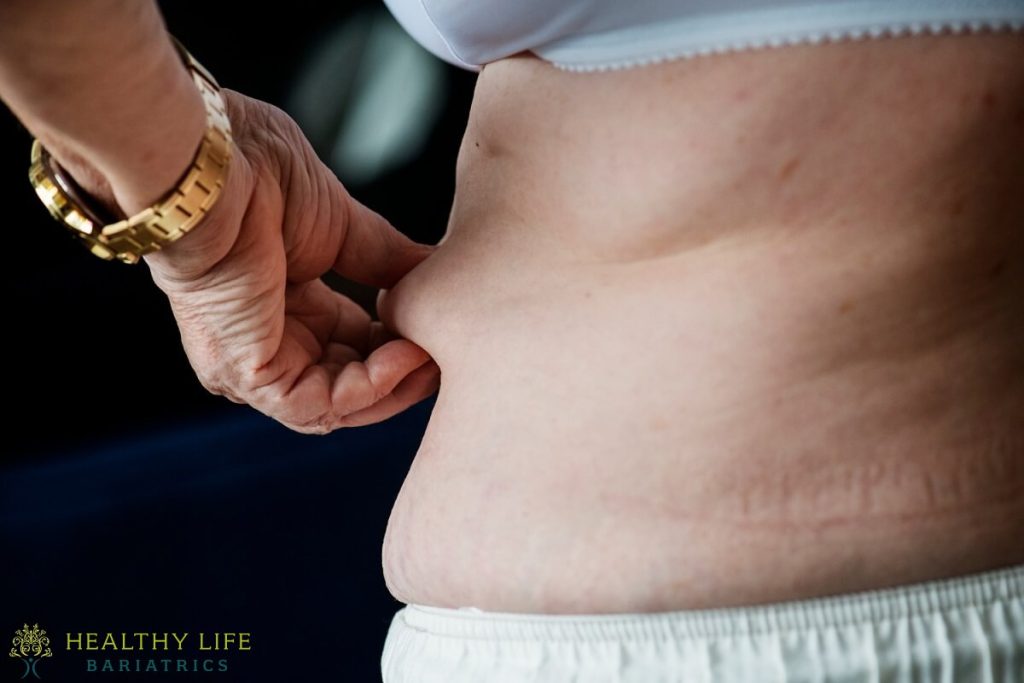
When discussing the disease of obesity with a doctor or bariatric surgeon, you may hear the term Obesity Comorbidities used from time to time.
In many situations, gastric bypass surgery is performed to avoid severe health risks.These include glucose intolerance, insulin resistance, hypertension, diabetes mellitus, arthritis, sleep apnea, gallbladder disease, hyperuricemia, and some cancers.
Obesity is associated with over sixty comorbidities. Each one of these illnesses puts a further strain on your health. To illustrate how harmful being obese can be for your health, here is a list of comorbidities you could potentially develop by being over your baseline weight.

Obesity is strongly linked with breathing problems and diseases such as:
Experts have found a correlation between obesity and obstructive sleep apnea (OSA). When you become obese, your upper respiratory tract narrows out due to pressure caused by neighboring fat deposits. To add to the problem, your muscles can weaken around that area. The result is that you stop breathing while asleep.
Obesity can dampen your immune system, making you more susceptible to illness from influenza, bacterial pathogens, and fungal exposure. Carrying an excess amount of fat also puts you in a chronic state of inflammation.
Asthma and obesity are two of the most common diseases. The two conditions also go hand-in-hand, though experts aren’t entirely sure why. What experts do know is that asthma is conducive to obesity due to reduced movements in patients. Obesity also tends to make asthma worse. Scientists have figured out that increased body fat in obese individuals leads to inflammation and elevated levels of inflammatory and anti-inflammatory agents that have a relationship with bronchial arthritis. We need to conduct more studies to find a causal relationship, however.
This illness, known as Obesity Hypoventilation Syndrome (OHS), is one of the notable Obesity Comorbidities. It occurs in individuals who are obese and experience chronically low oxygen levels and elevated carbon dioxide levels in their blood. The condition is colloquially called Pickwickian Syndrome, deriving its name from a character in Charles Dickens’ novel The Posthumous Papers of the Pickwick Club, who exhibited similar symptoms. Common symptoms associated with this comorbidity include:
The cause of this condition is the reduced capacity for breathing due to obesity. Your body is unable to adequately process carbon dioxide when you are obese, which allows the gas to build up in your body. Doctors don’t know what causes this comorbidity of obesity, but believe it has to do with hormone imbalances, neurological difficulties, and mechanical issues associated with breathing.
Obesity is highly associated with heart disease, which causes one out of every four deaths each year in the United States (CDC). Comorbidities in this category include:
This condition is caused by the buildup of plaque in the arteries that supply blood to the heart, resulting in a potential heart attack. Obesity can put you at high risk for blocked arteries, which can cause chest pain and shortness of breath.
Gaining an excess of weight puts you at increased risk of human primary (essential) hypertension. Another word for this is high blood pressure that doesn’t have a secondary cause.
Left ventricular hypertrophy (LVH) is a term for a condition where the pumping chamber of the heart located on the left becomes too thick. This hinders the amount of blood the heart can pump. Obese patients have a high prevalence of LVH, which can be caused by being overweight and some comorbidities like sleep apnea.
People with long-standing severe obesity are at particular risk for obesity cardiomyopathy, which refers to the structural and functional changes that occur due to congestive heart failure.
Being obese can speed up the progression of atherosclerosis, which is an artery disease caused by fatty plaque deposits coating the inner walls.
Pulmonary hypertension occurs when the pressure in the blood vessels coming from the heart to the lungs grows too high. The blood vessels in the lungs can then develop an increased amount of muscle in the wall of the blood vessels. Obesity makes you susceptible to this condition, which can also lead to a lowered amount of oxygen in the blood.

Being overweight and obese can cause problems with your CNS, leading to mild cognitive impairment and other problems.
A stroke happens when the blood supply to your brain is reduced or interrupted entirely. Without adequate blood, your brain can’t get the nutrients and oxygen it needs. Since brain cells can die within minutes, sufferers of strokes can suffer brain damage or death. Obesity is a prime risk factor for stroke in both men and women.
Idiopathic intracranial hypertension (IIH) is also called pseudotumor cerebri or benign intracranial hypertension. The obesity-related condition is an issue that leads to high amounts of brain pressure. The symptoms mimic a brain tumor. They include ringings in the ears that keep time with your heartbeat, headache behind the eyes, and short bouts of blindness.
Meralgia paresthetica is a disorder caused by the compression of a sensory nerve to the skin. Symptoms include numbness, tingling, and burning pain on the outside of the thigh.

Having an elevated BMI can inhibit fertility in men and women and cause pregnancy problems.
A higher than normal BMI can inhibit a woman’s fertility by harming normal ovulation. Obesity can even make treatments like in vitro fertilization (IVF) less successful.
Obesity has an effect on the hormone leptin, which can lead to early puberty. Leptin is created in the fat cells. The more fat you have, the more leptin you produce. Leptin regulates appetite, reproduction, and body type. One of the causes of early puberty can be having high leptin levels.
Having a high BMI inhibits sperm production and causes the male hormone testosterone to convert into estrogen. This in turn decreases testicle stimulation and the production of sperm in men.
In women with high BMIs, hormone imbalances can negatively affect ovulation and make regular pregnancy more difficult.
Hyperandrogenism is a disorder characterized by an excess amount of circulating male sex hormone in females. Having too much testosterone can lead to oily skin (seborrhea), acne, female pattern balding (alopecia), and masculine appearance.
PCOS affects 7% of all women and is the most common hormonal abnormality affecting women of reproductive age. Symptoms include excess body hair, menstrual irregularities, and infertility. PCOS is common in women carrying excess weight. In fact, 40% to 80% of all women with the condition are either overweight or obese.
Hypogonadotropic hypogonadism (HH) is a form of hypogonadism, which is a condition where the male testes or female ovaries don’t produce the normal amount of sex hormones. HH is characterized by a problem with the hypothalamus or pituitary gland. Rapid weight gain is one of the causes of HH in males and females.
Gestational hypertension is recognized among the common Obesity Comorbidities, particularly affecting women who carry excess weight before pregnancy. It is characterized by elevated blood pressure that develops initially and persists throughout pregnancy, typically starting after the twentieth week. Although this condition often lacks noticeable symptoms, it requires careful monitoring. In many cases, gestational hypertension poses minimal risk to mother and baby, frequently resolving spontaneously within twelve weeks after childbirth. However, obesity increases the likelihood of this condition and associated complications.
Macrosomia is a term that describes a newborn with excessively high birth weight (fetal overgrowth). Babies born with excessive growth are at higher risk of developing diabetes, obesity, and heart disease. Fetal macrosomia can also lead to birth trauma and other adverse pregnancy outcomes.
Pelvic Dystocia is a term that defines a difficult birth. It has characteristics such as an abnormal fetal size, pelvic issues, or irregular fetal positioning. Treatment depends on the reason for the problem and can usually result in performing a C-section.

Obesity disease is associated with a wide range of psychological effects, including mood disorders, self-esteem issues, and lowered body image.
Weight-based stigma can lead to discrimination, psychological distress, and poor physical health over time.
Obese men and women are 25% more likely to have a mood disorder or develop depression than their normal-weight counterparts. Obesity also causes all the known contributors to depression: Social isolation, poor self-image, and low self-image.
Being morbidly overweight is a significant risk factor for upper and lower extremity disorders.
Varicose veins twist and bulge through the skin. These unsightly and sometimes uncomfortable veins commonly appear on the feet and legs.
Lower extremity venous edema is where fluid becomes trapped inside your leg veins, causing them to swell. When the problem becomes chronic, skin thickening and lymphatic edema (lymphatic swelling) can develop.

Obesity disease puts you at greater risk of developing a range of different types of cancer.
Endometrial cancer is twice as common in overweight women and three times as common in women who are obese. The most common symptom of endometrial cancer is irregular vaginal bleeding.
Obese older men are at higher risk of colon cancer, though any age can become affected. The cancer forms as clumps of cells called polyps that form along the inside of the colon. Over time, these polyps can also convert to colon cancers, which can be deadly.
Prostate cancer forms in the prostate, which is a walnut-shaped gland in males that produces seminal fluid. This cancer is one of the most common cancers with unpredictable outcomes.
Overweight men are more susceptible to rectal cancer. The rectum is the tissue that comprises the last several inches of the large intestine. Long-term survival is favorable with advanced treatments of today.
Women who are obese after menopause are at higher risk for breast cancer. When you have more fat, your estrogen levels rise. Overweight women also tend to have boosted levels of insulin, which is another hormone affected by higher fat concentrations.
Obesity increases your risk for developing gallstones, and thus enhances your risk factor for gallbladder cancer.
Gallbladder cancer is highly fatal with a five-year survival rate of less than 10%. The high fatality rates may be due to the difficulty in detecting this cancer, even at advanced stages.
Otherwise referred to as cardia stomach cancer, this disease is caused by cell damage at the top of the stomach. The condition is linked to being overweight and obese and its main cause is gastroesophageal acid reflux. This cancer can be treated but is rarely cured. That may be because the diagnosis of cardia cancer usually happens at an advanced stage.
Renal cancer, also known as renal cell carcinoma, is among the serious Obesity Comorbidities and represents the most common type of kidney cancer. It predominantly occurs in older men, with obesity being a primary risk factor. Smoking is another significant contributor. Many cases of renal cancer remain symptomless until reaching advanced stages. Noticeable symptoms may include blood in the urine, an abdominal lump, and persistent pain. Treatment often involves surgical removal of the affected kidney; however, renal cancer carries the risk of metastasis, especially if diagnosis is delayed.
This cancer is the most fatal gynecological cancer. Having a high BMI puts you at greater risk for developing this cancer, but only slightly. However, experts agree that what we refer to as ovarian cancer is actually a grouping of cancers, and there’s still little knowledge about many of them. Experts do agree that obesity may negatively affect your overall survival if you develop ovarian cancer.
The causes of pancreatic cancer are the fluctuating hormones and growth factors that occur in people who may be carrying excess fat. High amounts of these hormones like insulin can increase the risk of some cancers, such as pancreatic cancer. Pancreatic cancer is one of the deadliest cancers affecting humans today.

Surgical patients who are obese face greater risks for a range of unfavorable outcomes.
Being overweight makes it more likely that a surgical site infection will develop. This is due to a range of factors, the primary being an obesity-impaired immune system.
Patients who are overweight or obese have higher risks of postoperative nerve infection, urinary infection, and myocardial infarction.
Obese patients can develop postoperative acute respiratory failure. This makes you more likely to develop pneumonia, requiring hospitalization and mechanical ventilation.
Deep vein thrombosis or DVT is a medical condition involving a blood clot that forms within a deep vein. DVT typically occurs in the extremities and being obese is a primary risk factor.
A pulmonary embolism is a blood clot that forms within a blood vessel. It typically forms in the leg where it then travels to an artery in the lungs. Once the blood clot lodges in the lungs, it can block blood flow, causing symptoms like chest pain, breathing issues, and cough. If not treated, pulmonary embolisms can be fatal.

Being obese is associated with a range of issues that deal with the organs, muscles, and tissues around the pelvic area.
Your gastrointestinal system runs from your mouth and through your stomach to your intestines, colon, and rectum. Being obese can increase your chances of developing a range of GI problems.
Gallbladder disease is one of the recognized Obesity Comorbidities, characterized by infection, inflammation, or blockage of the gallbladder a small, sack-like organ located beneath the liver. Being overweight or obese significantly increases your risk of developing gallstones, especially if you are female. This heightened risk occurs due to elevated cholesterol levels in the bile, which directly contributes to gallstone formation, making gallbladder disease a common health complication associated with obesity.
NASH is characterized by inflammation of the liver caused by a buildup of fat. The effects are similar to those in people who drink alcohol, leading to severe inflammation and scarring over time.
When you have too much fat in your liver, the doctors say you have fatty liver disease. We also call this condition hepatic steatosis. There are usually no symptoms, though they can include weight loss, fatigue, and abdominal pain. Weight gain is a risk factor for fatty liver, which can lead to liver failure (cirrhosis) if not treated early.
Obesity can increase your chances of experiencing acid reflux or reflux esophagitis. This is because of increased pressure on the lower sphincter of the esophagus, leading to acid exposure.

Obesity contributes to soft tissue damage and problems that can affect your musculoskeletal system.
Osteoarthritis has also another common name as wear and tear disease and involves the wearing down of cartilage and flexible tissue at the ends of bones. Obesity increases your chances of developing diseases such as arthritis of the hands, lower back, neck, hips, and knees.
Metabolic deficiencies caused by obesity can include issues such as insulin resistance, premature heart disease, and many others.
This obesity-related ailment is defined as an impairment in the way the body regulates blood sugar (glucose). There is no cure for type 2 diabetes but you can manage it through diet, medication, and insulin therapy.
Abdominal obesity is the most commonly observed risk factor for metabolic syndrome, which is actually a grouping of disorders lumped together. These include heart disease, high blood pressure, type 2 diabetes, and stroke.
Dyslipidemia is a weight-related ailment characterized by higher-than-average levels of lipids. Your body uses lipids to synthesize hormones and other substances to fulfill the body’s needs. When you carry too much fat, your body may deposit fat cells into the blood vessels, leading to higher levels of HDL or bad cholesterol. This can make you more susceptible to strokes, heart attacks, and other circulatory problems.
Endometrial cancer is twice as common in overweight and obese women compared to those at a healthy weight. Excess body fat increases estrogen levels, which can lead to abnormal cell growth in the lining of the uterus, significantly raising the risk of developing endometrial cancer. Maintaining a healthy weight or undergoing weight-loss interventions, such as bariatric surgery, can greatly reduce this risk, highlighting the importance of addressing obesity as a preventive health measure.
In addition to these 60+ conditions, women are at higher risk for mobility impairment. This occurs when muscle quality and strength begin to decline on account of your muscles and surrounding tissues being invaded with fat. Other factors contribute, including inflammation, insulin resistance, and hormone deficiencies.

Obese men and women may have unhealthy skin in some areas, as it can be difficult to keep those areas clean. Skin folds can also lead to the formation of skin problems like rashes and bacterial infections.
According to the CDC, obesity worsens your chances of having a favorable outcome if you come down with COVID-19 illness. Adults with excess weight are at significant risk of severe COVID-19 symptoms and death.
None of this should scare you. Rather, it should be a wake-up call for you. Being obese is bad for your health, and this list isn’t even complete.
The thing is, losing as little as 5% to 10% of your excess weight can significantly improve your health, including reducing your risk of developing many of the comorbidities for bariatric surgery mentioned above.
Weight loss (bariatric) surgery can help you beat the disease of obesity.
Popular surgeries like the gastric sleeve can also help you lose half or more of your excess weight.
The gastric sleeve works by restricting what you eat. It will make you less hungry. It will also causes you to fill up faster during meals.
The result is rapid weight loss and also a dramatically lowered risk for developing obesity comorbidities.
What’s more, weight loss surgery has been shown to be effective at treating comorbidities like type 2 diabetes, high blood pressure, and cancer.
Call Healthy Life Bariatrics today to discuss weight loss surgery and what it can do for you – (310)861-4093.